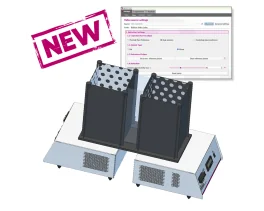Authors
S.H. Cheong, K.M. Lee, Y.I. Yang, J.Y. Seo, M.Y. Choi et al.
Lab
Inje University, Paik Hospital, Department of Anesthesia and Critical Care Medicine, Busan, Korea.
Journal
Laboratory animals
Abstract
Endotracheal intubation in rats is challenging due to difficulties visualizing the epiglottis and vocal cords. No visualization of these structures results in repeated intubation attempts which can cause trauma to the oral cavity and/or oesophagus, and death of the animal due to respiratory failure. Here, we describe a simple blind oral tracheal intubation technique in the rat that decreases the frequency of repeated intubations using an intubation device that comprises a 16 G intravenous catheter and a modified 18 G epidural needle, and a rodent ventilator. The epidural needle is bent in such a way that it curves in conformity with the rat's oral airway in order to direct the catheter into the larynx, and the rodent ventilator is used to verify its correct placement. The first attempt success rate of endotracheal intubation using the blind oral tracheal intubation technique with a rodent ventilator was greater than the first attempt success rate using the blind oral tracheal intubation technique without using a rodent ventilator. Although this method is a simple modification of a previously described method of blind oral endotracheal intubation, our method is easy to learn, inexpensive and does not require specialized equipment.
Source :

 Pain - Thermal Allodynia / Hyperalgesia
Pain - Thermal Allodynia / Hyperalgesia Pain - Spontaneous Pain - Postural Deficit
Pain - Spontaneous Pain - Postural Deficit Pain - Mechanical Allodynia / Hyperalgesia
Pain - Mechanical Allodynia / Hyperalgesia Learning/Memory - Attention - Addiction
Learning/Memory - Attention - Addiction Physiology & Respiratory Research
Physiology & Respiratory Research











![Dynamic Weight Bearing 2.0 – Postural Module [Add-on]](https://bioseb.com/733-home_default/dynamic-weight-bearing-20-add-on-postural-module.jpg)
























 Pain
Pain Central Nervous System (CNS)
Central Nervous System (CNS) Neurodegeneration
Neurodegeneration Sensory system
Sensory system Motor control
Motor control Mood Disorders
Mood Disorders Other disorders
Other disorders Muscular system
Muscular system Joints
Joints Metabolism
Metabolism Cross-disciplinary subjects
Cross-disciplinary subjects CONFERENCES & MEETINGS
CONFERENCES & MEETINGS